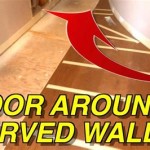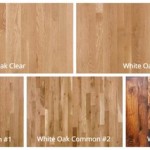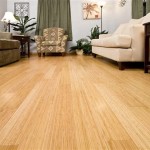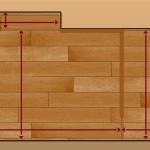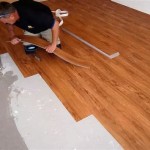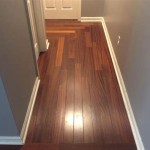High-End Resilient Flooring Review: A Comprehensive Guide
Resilient flooring, a category encompassing materials like vinyl, linoleum, and rubber, has evolved significantly in recent years. Once relegated to kitchens and bathrooms, high-end resilient flooring options now offer sophisticated aesthetics, exceptional durability, and enhanced comfort, making them suitable for a wide range of residential and commercial applications. This article provides a comprehensive review of high-end resilient flooring, examining its key features, benefits, and considerations for selection and installation.
The term "resilient" refers to the flooring's ability to spring back to its original shape after being compressed or impacted. This characteristic contributes to both comfort underfoot and resistance to damage from foot traffic and dropped objects. High-end iterations of resilient flooring typically incorporate advanced manufacturing techniques and premium materials to achieve superior performance and visual appeal compared to standard options.
Defining High-End Resilient Flooring
What distinguishes high-end resilient flooring from its more basic counterparts? Several factors contribute to its elevated status, including material composition, construction, design complexity, and performance attributes. Understanding these distinctions is crucial for making informed decisions about flooring choices.
Material Quality: High-end resilient flooring often utilizes virgin materials or blends with a higher percentage of virgin material. This translates to greater purity, consistency, and durability. For instance, luxury vinyl tile (LVT) may incorporate thicker wear layers and more robust core materials compared to standard vinyl flooring. Linoleum, in its premium formulations, may incorporate higher-grade flaxseed oil and natural pigments, resulting in richer colors and improved longevity.
Construction and Manufacturing: Advanced manufacturing processes, such as enhanced printing techniques and embossing methods, can create more realistic and textured surfaces. This allows high-end resilient flooring to mimic the look and feel of natural materials like hardwood, stone, and ceramic tile. Precise cutting and fitting mechanisms, particularly in click-lock systems, contribute to easier installation and a more seamless appearance.
Design and Aesthetics: High-end resilient flooring offers a wider range of design options, including intricate patterns, realistic wood grain textures, and sophisticated color palettes. Manufacturers often collaborate with designers to create visually appealing and on-trend flooring options. The attention to detail in these designs can significantly enhance the overall aesthetic of a space.
Performance Characteristics: Features such as enhanced scratch resistance, stain resistance, and waterproof capabilities are commonly found in high-end resilient flooring. Thicker wear layers provide greater protection against wear and tear, extending the lifespan of the floor. Antimicrobial treatments can also be incorporated to inhibit the growth of bacteria and mold, contributing to a healthier indoor environment.
Types of High-End Resilient Flooring
The resilient flooring category encompasses several distinct types, each with its unique characteristics and advantages. Understanding the differences between these types is essential for selecting the best option for a specific application.
Luxury Vinyl Tile (LVT) and Luxury Vinyl Plank (LVP): LVT and LVP are engineered products designed to replicate the look of natural stone or wood. They consist of multiple layers, including a wear layer, a printed design layer, a core layer, and often a backing layer. LVT typically comes in square or rectangular tile formats, while LVP is designed to resemble hardwood planks. High-end LVT and LVP often feature thicker wear layers, more realistic textures, and improved water resistance, making them suitable for high-traffic areas and moisture-prone environments.
Sheet Vinyl: Sheet vinyl is a continuous, seamless flooring option that is typically available in rolls. It offers excellent water resistance and is relatively easy to clean, making it a popular choice for bathrooms and kitchens. Modern sheet vinyl options are available in a wide range of patterns and colors, including designs that mimic tile and wood. High-end sheet vinyl often incorporates thicker wear layers and enhanced printing techniques for improved durability and visual appeal.
Linoleum: Linoleum is a natural and sustainable flooring option made from renewable materials such as flaxseed oil, wood flour, and rosin. It is naturally antimicrobial and resistant to fading, making it a durable and long-lasting choice. Linoleum is available in a variety of colors and patterns, and it can be installed in sheets or tiles. While it requires a sealant after installation, high-end linoleum offers a classic and eco-friendly flooring solution.
Rubber Flooring: Rubber flooring is known for its exceptional durability, shock absorption, and slip resistance. It is often used in commercial settings such as gyms, hospitals, and schools, but it can also be a suitable option for residential spaces with high foot traffic. High-end rubber flooring options are available in a variety of colors and textures, including designs that mimic stone and wood. It is available in rolls, tiles, and interlocking systems.
Key Considerations for Selecting High-End Resilient Flooring
Choosing the right high-end resilient flooring requires careful consideration of several factors, including the intended use of the space, the desired aesthetic, and the budget. A thorough evaluation of these factors will help ensure a satisfactory and long-lasting flooring solution.
Application and Traffic: The amount of foot traffic a floor will endure is a primary consideration. Areas with high traffic, such as hallways and entryways, require flooring with a thicker wear layer and greater scratch resistance. Consider the specific activities that will take place in the space. For example, a home gym would benefit from rubber flooring's shock-absorbing properties, while a kitchen would require a water-resistant material like LVT or sheet vinyl.
Aesthetic Preferences: High-end resilient flooring offers a wide range of aesthetic options, from realistic wood and stone looks to bold and contemporary patterns. Consider the overall design and color scheme of the space when selecting flooring. Coordinate the flooring with existing furniture, wall colors, and lighting to create a cohesive and visually appealing environment. Obtain samples of different flooring options and view them in the space under different lighting conditions to make an informed decision.
Budget: High-end resilient flooring typically comes at a higher price point than standard options. It is important to establish a budget and research the costs associated with different types of flooring. Consider not only the cost of the materials but also the cost of installation. Professional installation is often recommended for high-end resilient flooring to ensure proper installation and optimal performance. Factor in the long-term value of the flooring. While the initial investment may be higher, high-end resilient flooring's durability and longevity can often result in lower lifecycle costs compared to less expensive options that require more frequent replacement.
Installation Requirements: The installation requirements for different types of resilient flooring can vary significantly. Some options, such as click-lock LVT and LVP, can be installed relatively easily as a DIY project. Others, such as sheet vinyl and linoleum, may require professional installation to ensure proper adhesion and a seamless finish. Consider the complexity of the installation process and whether professional assistance is necessary. Proper subfloor preparation is crucial for the successful installation of any type of resilient flooring. Ensure that the subfloor is level, clean, and dry before beginning the installation process.
Maintenance: The maintenance requirements for high-end resilient flooring are generally straightforward. Regular sweeping or vacuuming is typically sufficient to remove dirt and debris. Occasional damp mopping with a mild detergent can help maintain the floor's appearance. Avoid using harsh chemicals or abrasive cleaners, as these can damage the wear layer. Some types of resilient flooring may require periodic sealing or polishing to maintain their shine and protect against wear. Check the manufacturer's recommendations for specific maintenance guidelines.
Environmental Considerations: For environmentally conscious consumers, linoleum stands out as a sustainable option made from renewable materials. Some LVT and LVP products are also manufactured with recycled content. Look for certifications such as FloorScore or GreenGuard to ensure that the flooring meets strict environmental standards for low VOC emissions. Consider the environmental impact of both the flooring material and the manufacturing process when making your selection.
By carefully considering these key factors, consumers can make informed decisions about selecting high-end resilient flooring that meets their specific needs and preferences. The investment in high-quality materials and professional installation can result in a beautiful, durable, and long-lasting flooring solution that enhances the value and comfort of any space.

Luxury Vinyl Plank Flooring Review Home Cute Little

Unbiased Luxury Vinyl Plank Flooring Review Cutesy Crafts

My Luxury Vinyl Plank Flooring Review Pros And Cons Average But Inspired

Unbiased Luxury Vinyl Plank Flooring Review Cutesy Crafts

Vinyl Plank Flooring Review 2 Years Later Love Renovations

My Vinyl Plank Floor Review Two Years Later Cutesy Crafts

Luxury Vinyl Plank Flooring Review The Turquoise Home

Luxury Vinyl Plank Flooring Review The Turquoise Home

Unbiased Luxury Vinyl Plank Flooring Review Cutesy Crafts

Vinyl Flooring Pros And Cons Forbes Home
Related Posts


